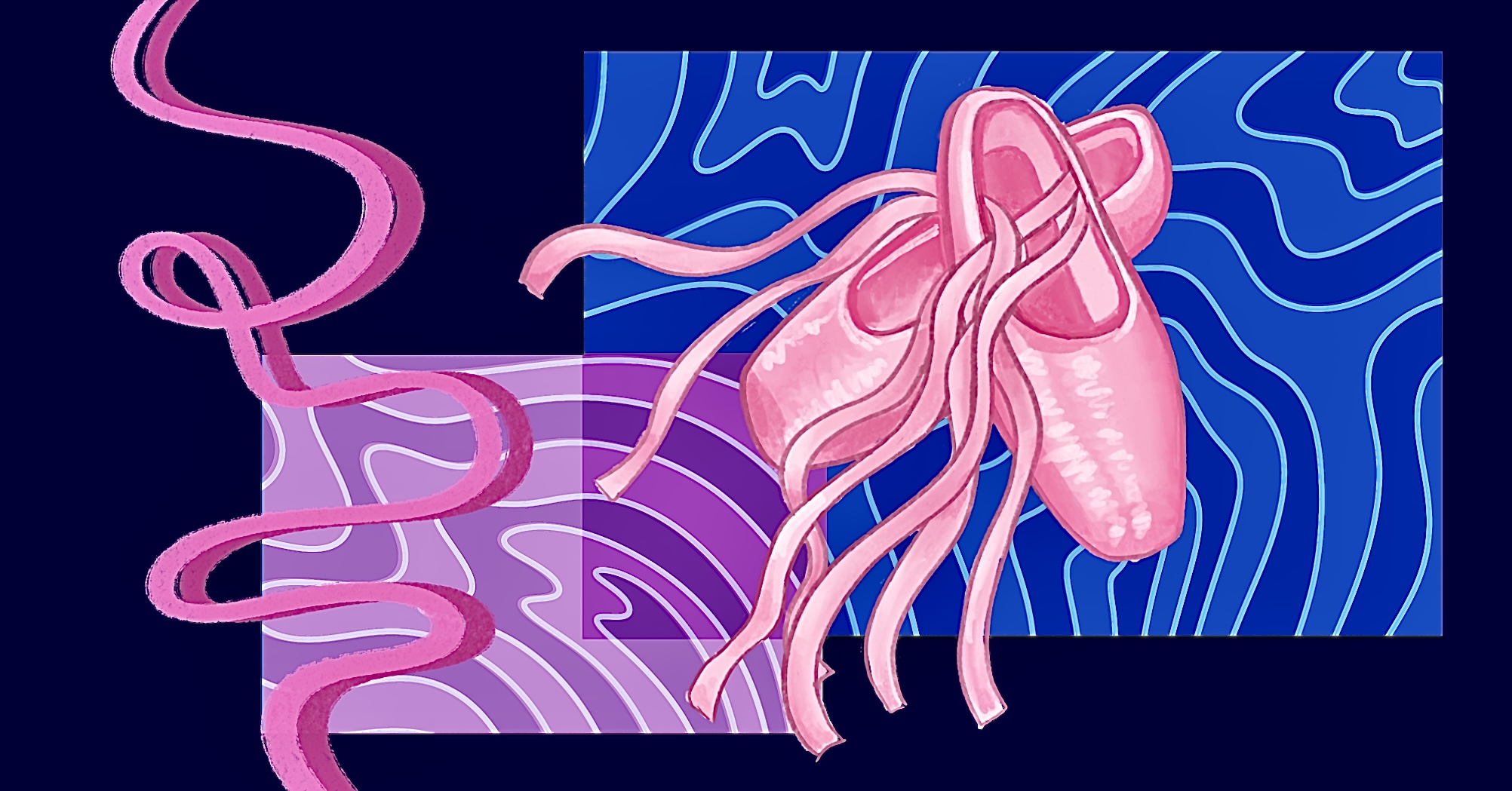The faults of virtual dance classes and smart fitness mirrors, according to an ex-ballerina
Unexplainable back or shoulder pain? Want to regain full mobility? You may want to start stretching and strength-building with others under real-time supervision.
Once a pre-professional dancer in ballet and jazz, I left the scene to pursue studies in neuroscience. After intense weight gain from hormonal dysfunction and the parental pressure to get a “serious career,” my experience with extra-curricular activities quickly dwindled.
But, to rehabilitate my recently broken ankle, I began to re-visit dance through a series of online classes from rogue ex-ballerinas (after generations of burnt-out professionals, many have left company stages to open their own schools of expressive movement).
After six months of limited activity, I confronted two questions: 1) Was I too unfit to return to dance? and 2) How much injury rehabilitation could I accomplish on my own without any experience? In hopes of answers, I decided to explore three different avenues for instruction, namely artificial intelligence (AI-driven dance classes), YouTube/Zoom classes, and in-person practice.
The first question was easy. There’s no one-size-fits-all level of fitness, so to survive a single class, I began to rebuild my strength by repeating beginner exercises until I could keep up with the pace of videos.
The second question turned out to be more complicated than it initially seemed. While AI-driven dance classes and AI-driven fitness claim to be the future, the current market suggests otherwise. Take Lululemon’s smart mirror for example. It’s a singular wall with a built-in app that promises to transform any room into a fitness class whenever the mood strikes. But it fails to deliver, as all of today’s home-vision devices do, because of ocular depth.
In the context of human and other mammalian vision systems, ocular depth refers to binocular (two-eyed) vision that detects and estimates distance in the 3D world. Ocular depth is vital to proprioception—the body’s ability to sense and process real-time feedback in its motor system, enabling us to make judgements about the placement and movement of our limbs.
With choreography, it’s difficult to understand and communicate “correct” dance positions without proprioceptive feedback from the surrounding environment. In an in-person dance class, because we’re in the presence of other people whose movements we aim to synchronize with, our ocular depth perception and bodily awareness blend together, causing our sensory input and motor output functions to constantly correct one another in a feedback loop within the integrative parietal lobes of the brain.
Ocular depth, and proprioception in general, challenge all AI vision systems. With the advent of virtual reality, silicon tech companies are attempting to model 3D structures within apps, so users get real-time feedback to help them position their bodies while exercising with smart devices.
There is a catch, however. Human ocular depth, as it relies on a pair of eyes, creates a “mid” image, that is, a visual combination of each eye’s perspective. If you close one eye and compare it to what you see normally, then to what you see solely in the other eye, you will have two distinctly different images of the same scene in front of you.
Apple has already tried to improve 3D depth imaging by adding three or four camera lenses on the backs of iPhones, but this solution doesn’t take into account the fact that each lens filters all of the information it detects, unlike the blurry, outer fields of our human vision that greatly influence our perceptive abilities.
These outer fields alert us to danger and environmental changes, and of course, changes in choreography. In other words, AI-driven dance classes continue to exist behind experimental studies.
In 2015, researchers from Toronto Metropolitan University found that virtual training for ballet choreography, along with advanced levels of dance involving pointe shoes, was ineffective due to software programs’ lack of dataset availability and inability to capture complex leg work. Furthermore, movements that usually help dancers cross the stage, could not be captured in the small field of vision that cameras offer.
What does the relatively poor quality of digital fitness education mean for the rehabilitation of a dancer? To answer this question, let’s consider facias, connective tissues surrounding all organs and muscles. A fascia is a thin layer of interwoven strands containing fibroblast cells. These cells are hugely adaptable to environmental changes and alert the immune system of invaders.
Multiple facias layers aid mobility as they slide against each other up to 75 per cent from their original position. If for whatever reason, like the restrictiveness of smart fitness mirrors, fascia layers are not able to move to their full capacity, pain occurs.
So, if you have unexplainable back or shoulder pain, or want to regain full mobility, maybe you should skip the AI-classes and YouTube videos and start stretching and strength-building with dancers in the flesh.

